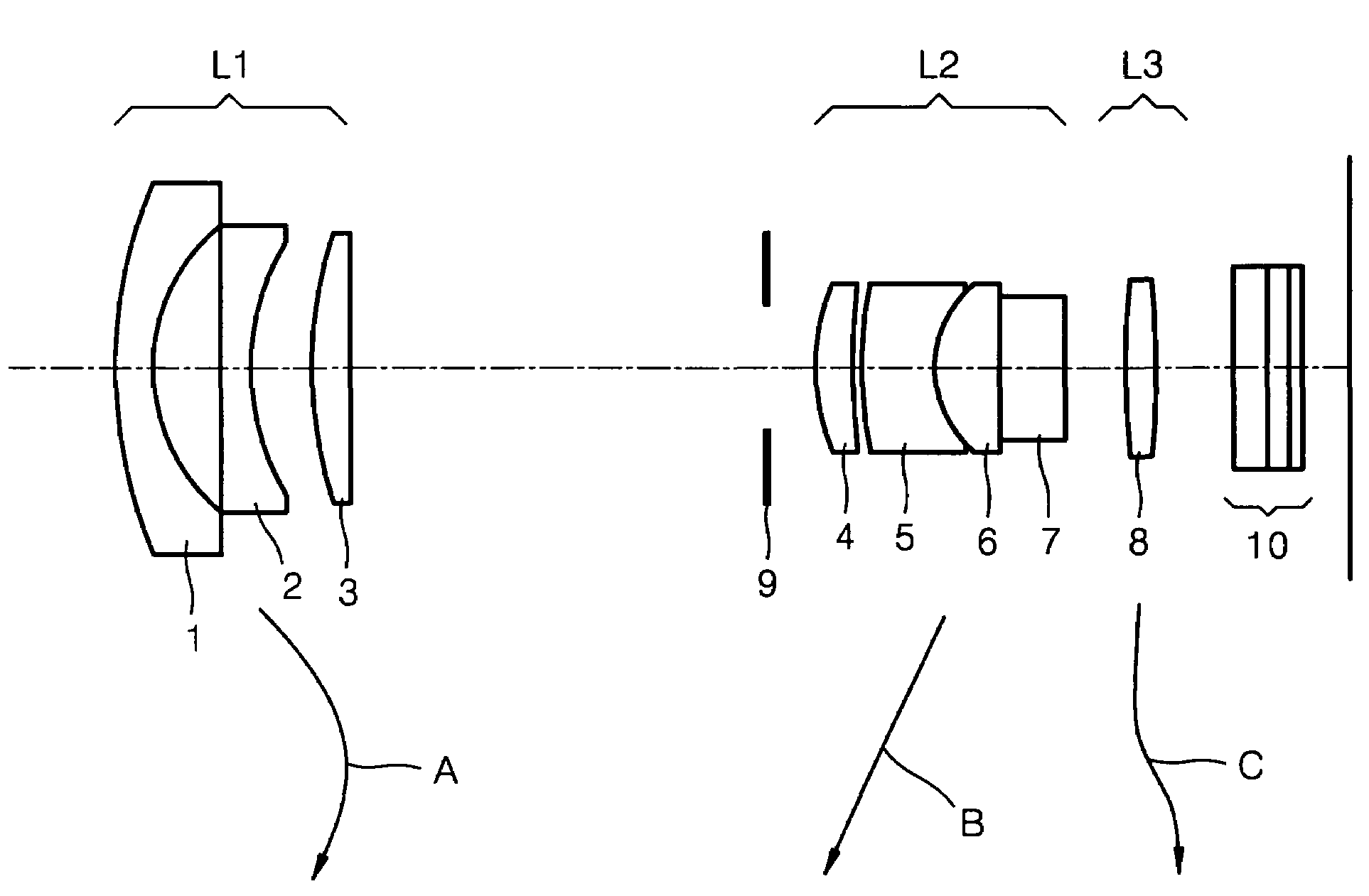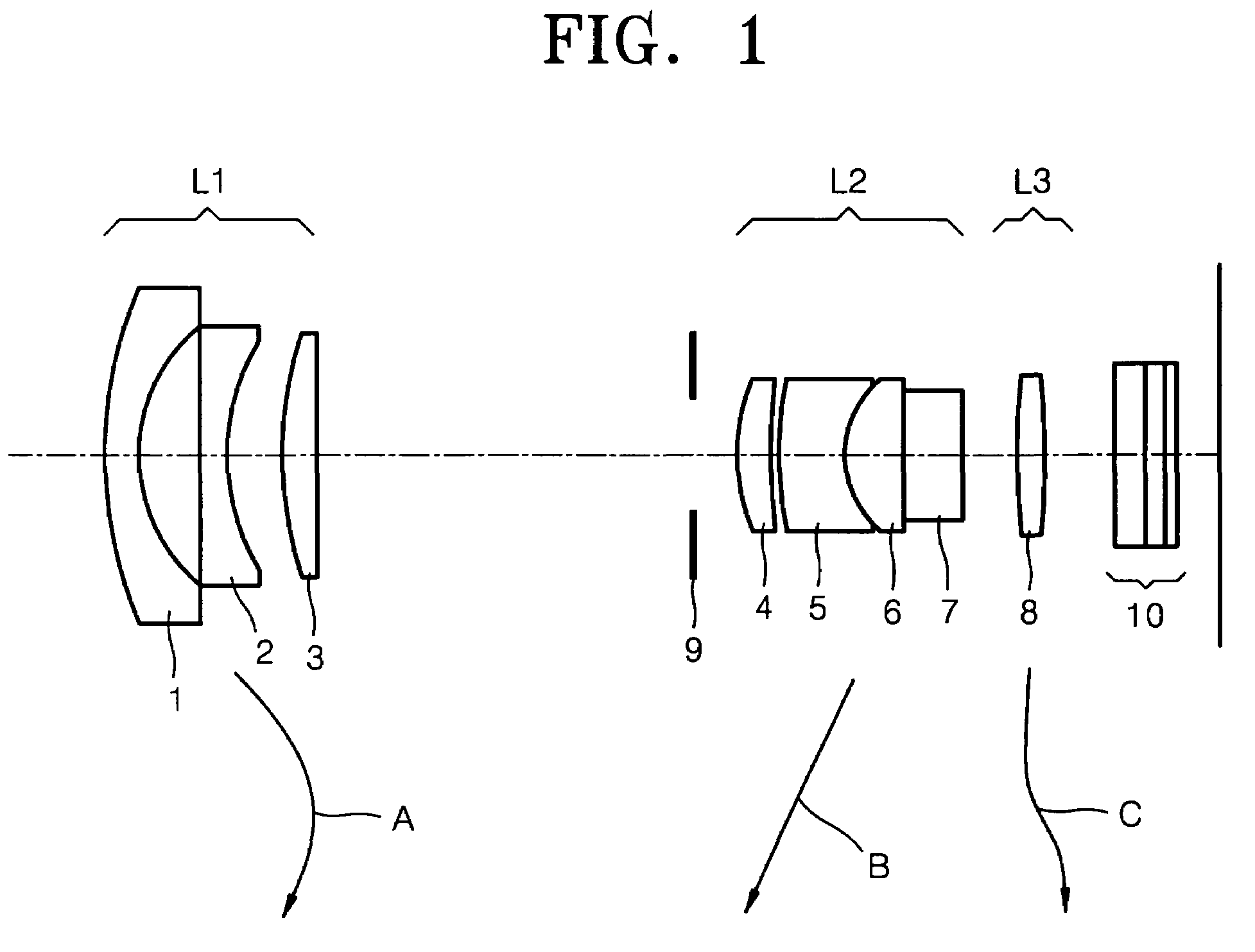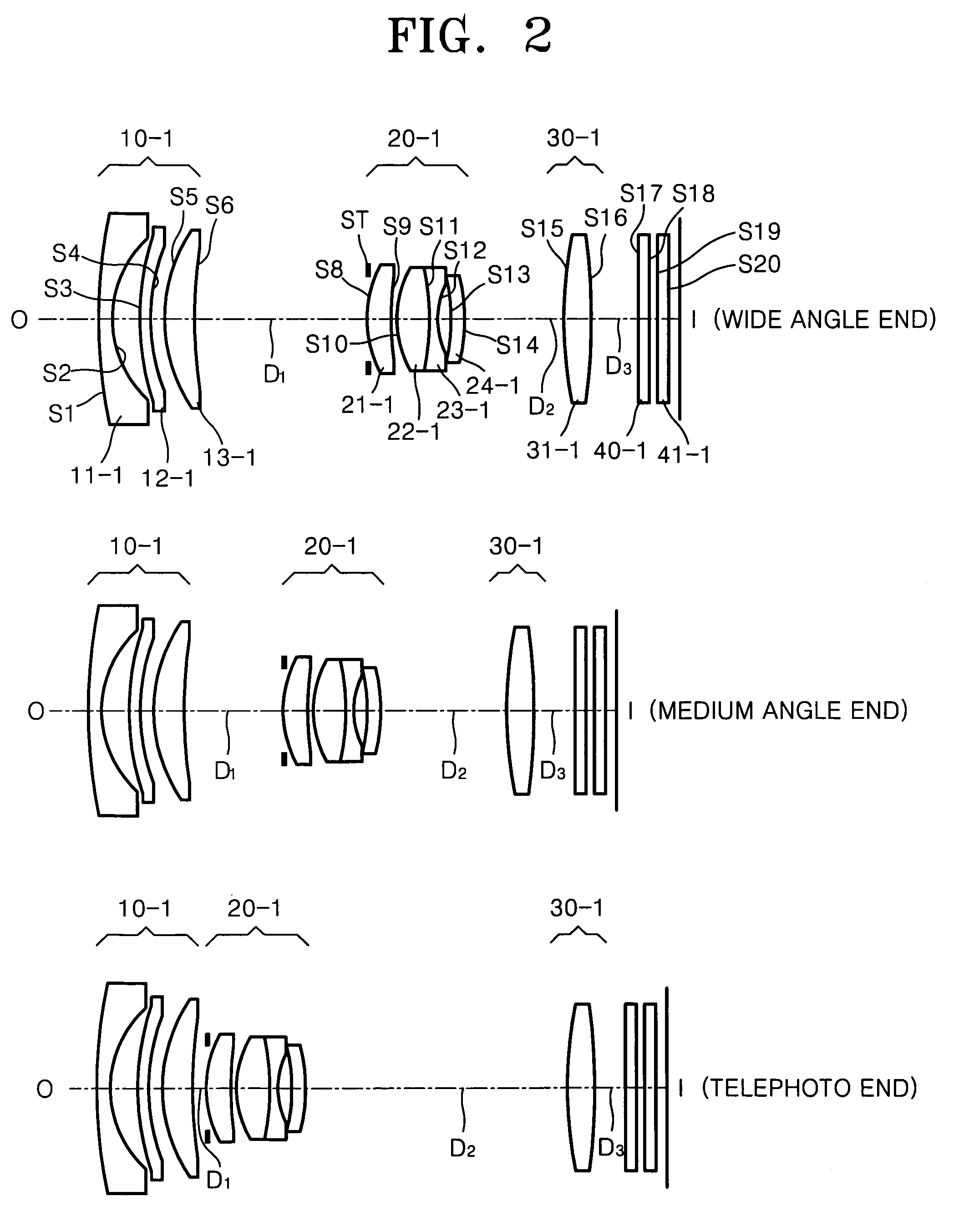Compact zoom lens
a compact, zoom lens technology, applied in the field of zoom lenses, can solve the problems of increasing the size of the zoom lens optical system, requiring a large receiving space, so as to reduce manufacturing costs, improve the zoom ratio, and be compact and light.
- Summary
- Abstract
- Description
- Claims
- Application Information
AI Technical Summary
Benefits of technology
Problems solved by technology
Method used
Image
Examples
embodiment 1
[0057]Hereinafter, f denotes a combined focal length of an entire lens system; Fno denotes an F-number; ω denotes a field angle; R denotes a radius of curvature; Dn denotes a thickness of a center of a lens or a distance between lenses; Nd denotes a refractive index; Vd denotes an Abbe number; St denotes an aperture stop; and D1, D2, and D3 denote variable distances between lenses. Reference numerals of elements in the embodiments are written with embodiment numbers.
[0058]FIG. 2 is a cross-sectional view of a zoom lens according to an embodiment of the present invention. Referring to FIG. 2, a first lens group 10-1 has a first lens 11-1, a second lens 12-1, and a third lens 13-1. A second lens group 20-1 has fourth through seventh lenses 21-1, 22-1, 23-1, and 24-1. A third lens group 30-1 has an eighth lens 31-1. Reference numeral 40-1 designates an infrared filter, and reference numeral 41-1 designates a cover glass.
[0059]
f; 6.19~10.16~17.34, Fno; 2.86~3.66~5.162, ω; 63.48~39.44~23...
embodiment 2
[0063]FIG. 5 is a cross-sectional view illustrating optical configurations of a zoom lens at a wide angle position, a medium angle position, and a telephoto position, respectively, according to another embodiment of the present invention. Referring to FIG. 5, a first lens group 10-2 has first through third lenses 11-2, 12-2, and 13-2. A second lens group 20-2 has fourth through seventh lenses 21-2, 22-2, 23-2, and 24-2. A third lens group 30-2 has an eighth lens 31-2. Reference numeral 40-2 designates an infrared filter, and reference numeral 41-2 designates a cover glass.
[0064]
f; 6.60~10.82~19.81, Fno; 3.19~4.01~6.02, 2ω; 59.82~37.18~20.43Thickness or distanceSurface(S)Radius of curvature(R)Between lenses(Dn)Refractive index(Nd)Abbe number(Vd)0:INFINITYINFINITYS1:27.3980.501.81609245.2673S2:5.3010.78S3:7.4730.501.53120056.5000(plastic lens)S4:6.3470.72ASP:K: −2.032070A: 0.408593E−03B: −.806044E−04C: −.630363E−07D: −.297865E−07S5:7.5351.081.84666323.7848S6:14.908D1ST:INFINITY0.00S8:...
embodiment 3
[0068]FIG. 8 is a cross-sectional view illustrating optical configurations of a zoom lens at a wide angle position, a medium angle position, and a telephoto position, respectively, according to still another embodiment of the present invention. Referring to FIG. 8, a first lens group 10-3 has first through third lenses 11-3, 12-3, and 13-3. A second lens group 20-3 has fourth through seventh lenses 21-3, 22-3, 23-3, and 24-3. A third lens group 30-3 has an eighth lens 31-3. Reference numeral 40-3 designates an infrared filter, and reference numeral 41-3 designates a cover glass.
[0069]
f; 6.50~10.66~19.50 Fno; 2.90~3.57~5.05 2ω; 59.38~37.22~20.70Thickness or distanceSurface(S)Radius of curvature(R)between lenses(Dn)Refractive index(Nd)Abbe number(Vd)0:INFINITYINFINITYS1:10.1131.001.82938633.1861S2:5.3862.16S3:48.4470.501.53120056.5000(plastic lens)S4:9.7750.62ASP:K: −3.001057A: 0.816584E−03B: −.116274E−04C: 0.477461E−06D: −.217586E−07S5:8.1231.211.84470623.8272S6:14.376D1ST:INFINITY0....
PUM
 Login to View More
Login to View More Abstract
Description
Claims
Application Information
 Login to View More
Login to View More - R&D
- Intellectual Property
- Life Sciences
- Materials
- Tech Scout
- Unparalleled Data Quality
- Higher Quality Content
- 60% Fewer Hallucinations
Browse by: Latest US Patents, China's latest patents, Technical Efficacy Thesaurus, Application Domain, Technology Topic, Popular Technical Reports.
© 2025 PatSnap. All rights reserved.Legal|Privacy policy|Modern Slavery Act Transparency Statement|Sitemap|About US| Contact US: help@patsnap.com



